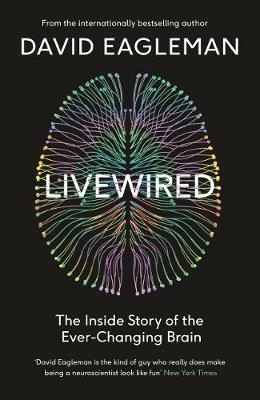Monday, 25 April 2022
Our brain: neither hardware nor software, but “liveware”!
 This week I’d like to tell you about a book by David Eagleman, entitled Livewired: The Inside Story of the Ever-Changing Brain. This book discusses several subjects related to brain plasticity, which is one of Eagleman’s research areas. In this book, one of Eagleman’s main ideas, which he attempts to conceptualize with the term “livewired”, is that the human brain is a machine that spends its time reconfiguring itself. In contrast, computers are “hardwired” with predefined electronic circuits that run software—computer programs that use this computer hardware to perform mathematical calculations and logic operations. The human mind or human thought has often been erroneously compared to a software program that needs the “hardware” of the human brain to manifest itself. This is a very poor metaphor for many reasons, of which the one cited by Eagleman is not the least. (more…)
This week I’d like to tell you about a book by David Eagleman, entitled Livewired: The Inside Story of the Ever-Changing Brain. This book discusses several subjects related to brain plasticity, which is one of Eagleman’s research areas. In this book, one of Eagleman’s main ideas, which he attempts to conceptualize with the term “livewired”, is that the human brain is a machine that spends its time reconfiguring itself. In contrast, computers are “hardwired” with predefined electronic circuits that run software—computer programs that use this computer hardware to perform mathematical calculations and logic operations. The human mind or human thought has often been erroneously compared to a software program that needs the “hardware” of the human brain to manifest itself. This is a very poor metaphor for many reasons, of which the one cited by Eagleman is not the least. (more…)
From the Simple to the Complex | Comments Closed
Monday, 4 April 2022
How to avoid our natural tendency to divide the world between “us” and “them”
 This week, I’d like to talk about two articles on the work of Robert Sapolsky, a primatologist and neurobiologist who published the superb book Behave: The Biology of Humans at Our Best and Worst in 2017. In that book, Sapolsky stylishly and eloquently examined the many factors that have influenced our behaviours from the time of our primate ancestors through to the modern societies of today. He focused especially on our identity behaviours—the ones that make us divide the world into “us” and “them” and that so many politicians now exploit to try to capture our votes. (more…)
This week, I’d like to talk about two articles on the work of Robert Sapolsky, a primatologist and neurobiologist who published the superb book Behave: The Biology of Humans at Our Best and Worst in 2017. In that book, Sapolsky stylishly and eloquently examined the many factors that have influenced our behaviours from the time of our primate ancestors through to the modern societies of today. He focused especially on our identity behaviours—the ones that make us divide the world into “us” and “them” and that so many politicians now exploit to try to capture our votes. (more…)
From Thought to Language | Comments Closed







